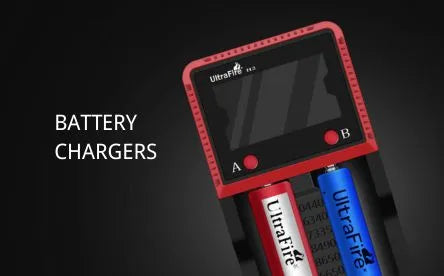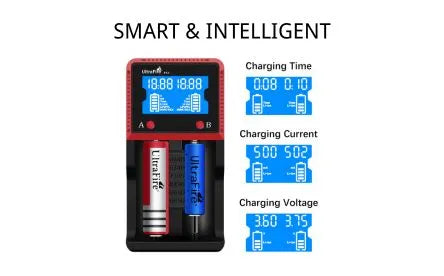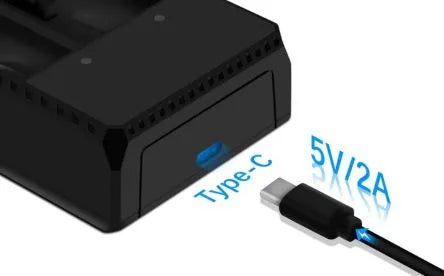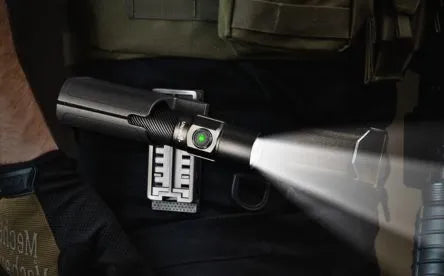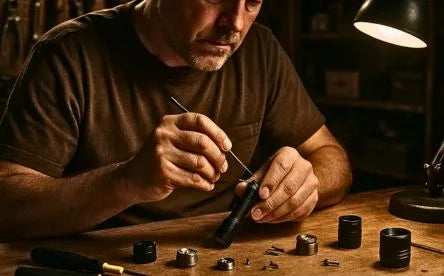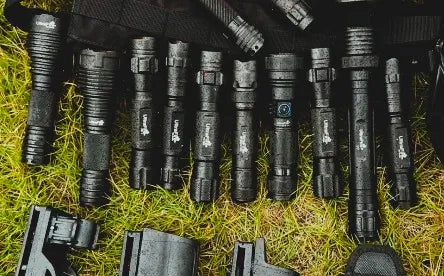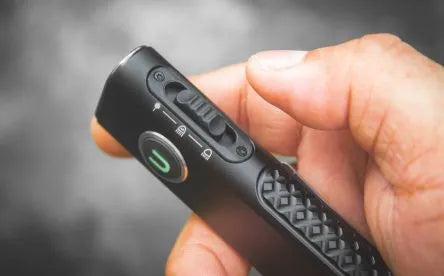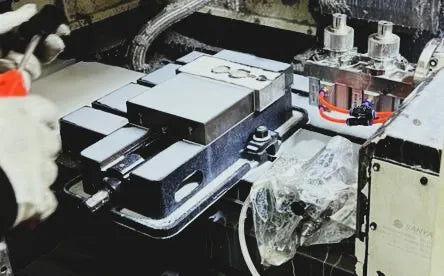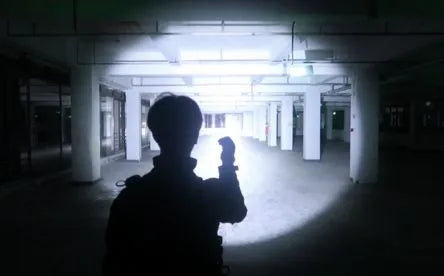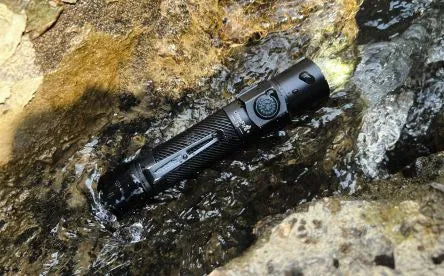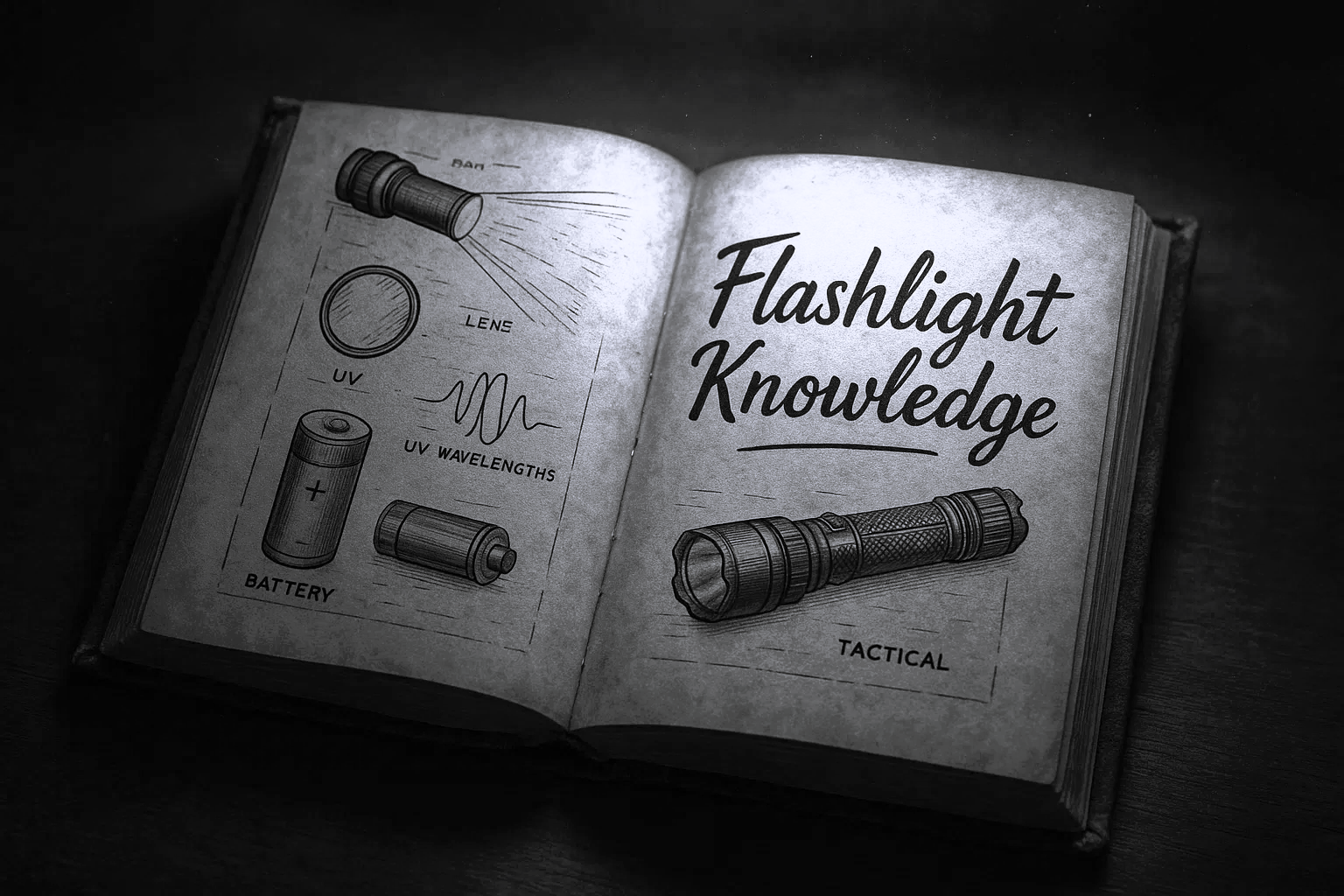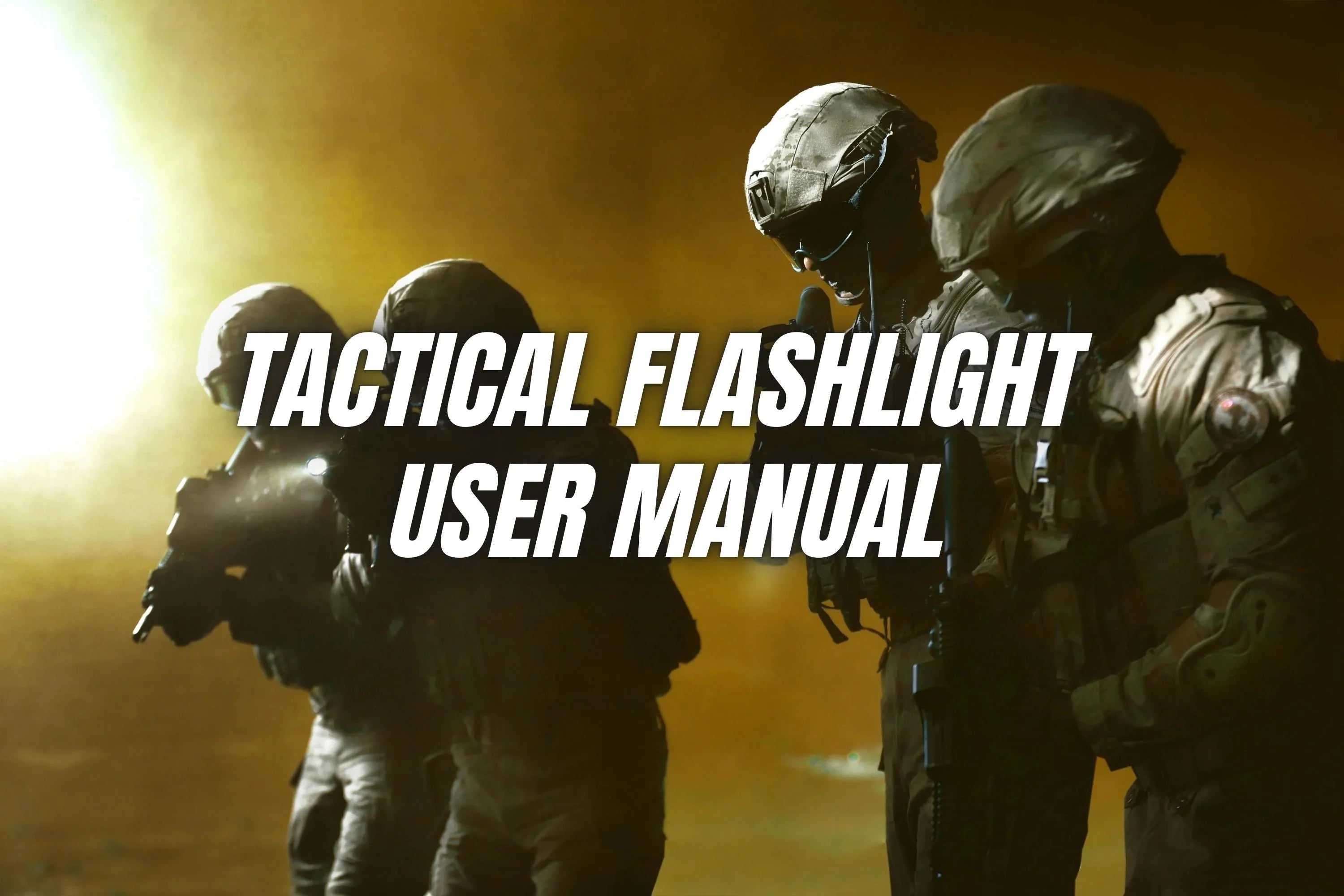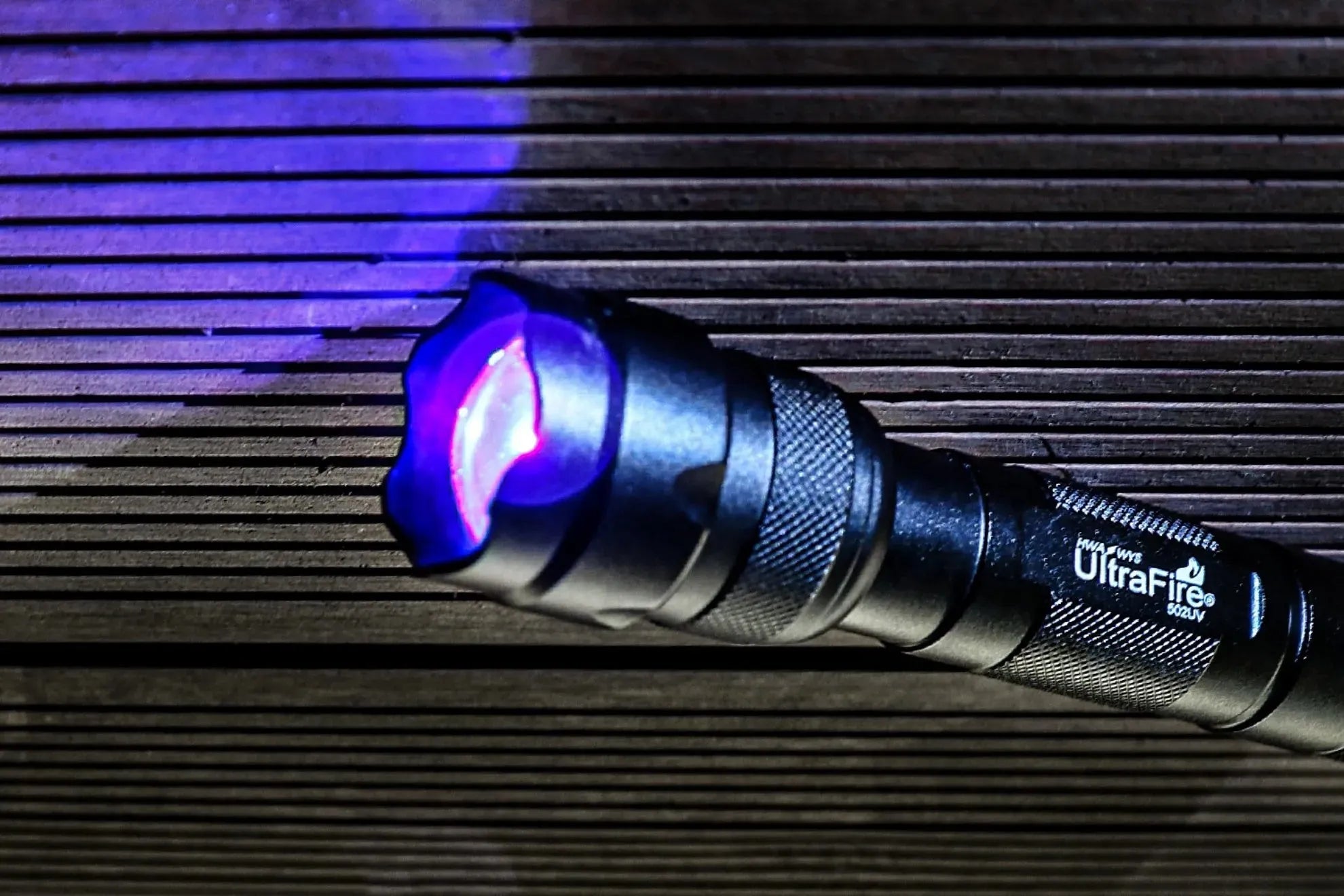Understanding UV Flashlight Wavelengths
Ultraviolet light is just beyond visible violet in the electromagnetic spectrum (about 100–400 nm). UV is usually split into UV-A (315–400 nm), UV-B (280–315 nm) and UV-C (100–280 nm). UV-A is the “long-wave” or near-UV range that UV flashlights use. It is much less energetic (and safer) than UV-B or germicidal UV-C. In other words, a 365 nm or 395 nm LED is only about 5–30 nm below the human-visible range. In fact, one UV flashlight expert notes that “395 nm is about 30 nm closer to visible light (violet) than 365 nm is. Or, in other words, 365 nm is ‘deeper’ into the UV spectrum than 395 nm is.”. Both 365 nm and 395 nm are in UV-A, so they are used for fluorescence and are much safer than UV-B/C.

In the spectrum above, notice that UV starts just past violet. UV-A (315–400 nm) is the segment used by blacklight flashlights. Because 395 nm is very close to visible violet, a 395 nm LED emits a pronounced purple glow, whereas a true 365 nm LED emits almost no visible color (just a faint bluish-white “leak” from the LED). In practice this means that a 365 nm UV flashlight produces a more “invisible” beam rich in UV energy, which often makes fluorescent substances glow brighter. For example, many banknote security inks and minerals fluoresce more strongly under 365 nm than 395 nm. However, 365 nm LEDs are usually more expensive and slightly less efficient, whereas 395 nm lights tend to be cheaper and still show useful fluorescence (just with more purple light mixed in). In short:
-
365 nm (deep UV-A): Hardly any visible violet light leaks out; best for strong fluorescence and detail. Objects often glow most brightly under this wavelength.
-
395 nm (near-UV-A): Emits a noticeable violet beam (because many 395 nm LEDs also emit at 400–410 nm). It still causes fluorescence, but with more visible color. These lights are common and lower-cost.
Because both are UV-A, general safety considerations are similar (see Safety FAQs below).
Common Uses of UV Flashlights
UV flashlights have many fun and practical uses for consumers. Here are some popular examples:
-
Pet Stain & Leak Detection: Dried urine (from dogs, cats, rodents, etc.) often contains fluorescent compounds and will glow under UV. Shining a 365 nm UV light on carpets, furniture or walls can reveal hidden pet stains or leaks that are invisible to normal light. (Note: the glow is usually seen best on dry stains.)
-
Scorpion Hunting: All scorpions have compounds in their exoskeletons that fluoresce bright bluish-green under UV. At night, a UV flashlight will make any scorpion in view glow eerily, which is why gardeners and outdoors enthusiasts use UV lights to find scorpions in the yard.
-
Currency and ID Verification: Many banknotes and passports include fluorescent security threads or ink that only show under UV. For example, genuine U.S. bills have embedded security threads that glow a distinct color under UV light. A UV flashlight can highlight these hidden markers to help spot counterfeits.
-
Mineral & Fossil Inspection: Certain minerals (like fluorescent rocks) and even some preserved fossils glow under UV. Hobbyists use UV lights to identify these fluorescent materials.
-
Leak Detection: Mechanics may use UV-reactive dyes in coolant, engine oil, or A/C refrigerant. After adding the dye, a UV light can reveal leaks by lighting up the dye. Similarly, plumbers use UV to find leaks if plumbing dye is present.
-
Cleaning/Inspection: In hotels or homes, UV lights can check for cleanliness by making biological residues or dust stand out. (Chemicals in laundry detergents or fabric softeners can also fluoresce, so clothes or rugs may glow under UV.)
-
Arts, Crafts & Entertainment: Blacklight paint and inks on posters, clothing or art will glow vividly under UV. Ultraviolet lights are used for parties (blacklight posters) or Halloween decorations.
Each of these applications relies on UV-A causing fluorescence. In short, if something has fluorescent dye or proteins, a UV flashlight will make it light up. For example, one user group noted that their “Scorpion UV Flashlight can detect: scorpions; rodent urine; human, pet and pest stains; counterfeit money; ID verification, mineral identification… and more.”. And as mentioned above, security threads in U.S. money literally glow under UV, so carrying a small UV flashlight can help quickly check a bill.
Adjusting the Beam Focus
Most handheld UV flashlights feature an adjustable focus (sometimes called a zoom or slide focus). This lets you change the beam from a wide floodlight to a narrow spotlight by moving the lens or head. In practice, you simply slide or twist the front portion of the flashlight. When you slide the lens forward (toward the LED), the light is diffused into a broad flood with a large area (lower intensity). When you slide it backward (away from the LED), the beam becomes a tight, concentrated spot with longer range.

For example, many UV flashlights use a sliding head design (as shown). Pushing the head forward spreads the UV over a wider area (good for scanning carpets or walls), while pulling it back focuses the light in a beam for distance (good for spotting far-away objects like scorpions). The advantage is clear: a wide flood lets you quickly illuminate a large nearby area, whereas a narrow spot beam lets you see farther.
-
Wide (Flood) Beam: Use this for close-range scanning and general coverage. It illuminates a broad area but with lower peak intensity. For instance, when searching a large floor for pet stains or cleaning up a workshop, a wide beam lights up more at once.
-
Narrow (Spot) Beam: Use this for distant inspection or pinpointing detail. The spotlight has a brighter center and reaches further. For example, to check the far side of a dark yard for scorpions or to read a UV security mark on a faraway wall, the focused beam is ideal.
By adjusting the focus (usually by a simple slide or twist), you have one flashlight that can do both tasks. As Ledlenser’s optical engineers explain, moving the lens relative to the LED allows “close-range illumination” when near (wide beam) and a “sharp high beam” when far (focused beam).
ZWB2 Filter and UV Output Enhancement
One special feature sometimes found on 365 nm UV flashlights is a ZWB2 glass filter (also known as UG11). This is an optical filter element placed over the LED that only passes UV wavelengths and blocks most visible light. In simple terms, a ZWB2 filter cleans up the output by removing that unwanted purple glow.
-
A ZWB2 filter is made of “UV black glass” that passes UV (around 250–360 nm) but absorbs visible light.
-
In practice, adding a ZWB2 filter to a 365 nm LED removes nearly all of the visible (purple) leakage. One user reported that with a ZWB2 in place, it performed “exactly as expected, passing mid-range UV and blocking most visible light. It’s a big improvement for my UV LED that emitted a lot of visible ‘purple’ light (that I did not want)”.
-
The result is crisper UV output. Without the filter, even a 365 nm LED will leak a tiny bit of blue/violet light (making it look dim bluish). The ZWB2 filter cuts those wavelengths, so you get only UV-A coming through. This makes fluorescent objects appear even more vivid since there’s no extra white/purple wash from visible light.
One trade-off is that the filter absorbs some of the UV energy (e.g. a 2 mm ZWB2 might pass ~75% of the UV), so the overall beam is slightly dimmer. In many cases, users find this worth it for the improved contrast and true deep-UV glow. In short, adding ZWB2 glass yields cleaner, more purely-UV light by filtering out visible “junk” light, which is especially valuable for a 365 nm UV flashlight.
Frequently Asked Questions
Q: Are UV-A flashlights (365 nm or 395 nm) safe for everyday use?
A: UV-A (315–400 nm) is the least energetic form of UV and is generally considered safe for short exposures. In fact, tanning beds use UVA and our skin is exposed to some UVA from sunlight. However, direct eye exposure should be avoided – just as you wouldn’t stare into any bright light. Prolonged or intense exposure can cause eye irritation or skin reddening over time. It’s wise to wear UV-blocking safety glasses (many flashing replacement glasses block UVA) if you’re using a powerful UV light for a while. Remember that UV-A still can cause oxidative stress in eyes and skin, even if it doesn’t sunburn you like UV-B does. In summary, occasional use of a UV-A flashlight (at 365–395 nm) is relatively low-risk, but always use common sense: don’t shine it into anyone’s eyes, and consider lightweight goggles for sensitive eyes.
Q: What’s the difference between a 365 nm and a 395 nm UV flashlight, practically speaking?
A: In practice, 365 nm light is “deeper UV” and 395 nm is “near UV.” A 395 nm flashlight typically looks bright purple to your eyes, whereas a true 365 nm flashlight appears almost invisible with just a slight blue tint. The 365 nm wavelength penetrates deeper and usually makes fluorescent substances glow more strongly. For most detection tasks (pet stains, scorpions, currency markers), a 365 nm light will give a more dramatic glow. A 395 nm light still works – it’s cheaper – but you’ll see a lot more purple haze (which is mostly just residual visible light). So if you want maximum fluorescence or professional performance, go with 365 nm. If you just need a basic blacklight effect and don’t mind some visible purple, 395 nm is fine. Both are still UV-A and differ mainly in the amount of visible light they emit.
Q: How do I adjust the focus (beam width) on my UV flashlight?
A: Most models have a sliding or twistable head. To make the beam wider, slide (or twist) the front of the flashlight forward towards the LED. To concentrate the beam into a spot, slide it backward away from the LED. Some flashlights also use a twist mechanism on the barrel. Essentially, you’re moving a lens/reflector system: closer = flood, farther = spot. When set to flood, the beam will cover a large area with soft light; when set to spot, the beam will look like a bright circle in the distance. Use flood for scanning floors or tables (pet stains, large surfaces) and spot for shining far away (looking at a ceiling corner, chasing a scorpion in the yard).
Q: What is ZWB2 glass and should I get a UV flashlight with it?
A: ZWB2 is a UV-pass filter glass often used on high-end 365 nm flashlights. It passes UVA but blocks most visible light. With a ZWB2 filter in place, the beam’s purple tint disappears and you get purer UV output. This makes it easier to see fluorescence without the distraction of any white or violet spill. If your budget allows, a 365 nm UV flashlight with ZWB2 is ideal for serious use (strongest glow and best contrast). If you only need a simple checker light and cost is a concern, a non-filtered light will still work, but expect some purple from the LED. In short, ZWB2 isn’t required for every user, but it improves clarity by filtering out visible leakage.
Q: Can I use a UV flashlight to find bedbugs or fleas?
A: Generally, no. Bedbugs and fleas do not glow under UV light in a way that flashlights can easily detect. (There was a myth that bedbug droppings might glow, but in practice bedbugs and most other insects won’t show bright fluorescence like scorpions do.) Stick to pet stains, scorpions, mold, or chemicals; these are where UV really helps.
Q: Why does my UV flashlight look purple and not completely black?
A: Even a 365 nm LED leaks a tiny bit of visible light at the tail end of its spectrum. This leakage appears as a dim purple or bluish glow around the UV beam. A 395 nm LED has even more visible output. This is normal. The only way to completely eliminate the purple tint is with a UV-pass filter (like ZWB2). Otherwise, a small amount of visible violet is always seen whenever the flashlight is on (even though the majority of the light is UV, which we can’t see with our eyes).
Q: Are UV flashlights safe to use around children or pets?
A: For quick home tasks, a UV flashlight is generally safe when used properly. Avoid shining it in eyes or on skin for long periods. It won’t “burn” like a normal lamp, but limit direct exposure. There’s no magic “UV-healing” property nor is it radioactive. Kids and pets will not glow (apart from fluorescence of things like pet hair or fabrics), and they won’t be harmed by a brief blast of UV-A. However, as a precaution, don’t let anyone (even pets) stare into the beam, and turn it off when not needed.
Q: Do I need special batteries or glasses for my UltraFire UV flashlight?
A: Most UltraFire UV flashlights run on standard rechargeable batteries (like 18650 lithium-ion cells) or sometimes AA/AAA. Always use the recommended cell for best performance and safety. No special protective gear is required, but goggles that block UV-A can be used if you want extra peace of mind. The UltraFire manuals may mention using glasses if you’re sensitive. Otherwise, use it like any other LED flashlight.
Q: Can I use a UV flashlight for hobby projects like resin curing or mineral hunting?
A: Yes, to an extent. A powerful 365 nm flashlight can cure some UV-reactive resins (though specialized curing lamps exist), and it definitely works for mineral fluorescence. Hobbyists often carry a UV light when rockhounding to identify fluorescent minerals. For crafts, UV-reactive paints and glues will glow under any UV-A light, so your UV flashlight will highlight those.
Q: My carpet/ceiling has a glow under UV but I don’t know why.
A: Many everyday materials glow under UV. White paper, laundry detergent residues, certain wall paints or ceiling textures, and fabric optical brighteners will fluoresce pale blue-white. Even your eyes or fingerprints can glow faintly. This is normal and just shows how UV highlights things we usually don’t notice. It doesn’t necessarily mean a stain or hazard; often it’s just normal material response.
Q: How far can a UV flashlight beam reach?
A: Beam distance depends on the LED power and focus, but typically a handheld UV flashlight will illuminate objects well up to tens of feet. The focused (narrow) mode will reach farther and brighter, perhaps 50+ feet, whereas the flood mode might only clearly light up things within 20 feet. In practical terms, most scorpion-spotting or currency-checking happens within 10–20 feet anyway. Always adjust focus to suit the distance.
Q: Any tips for using UV flashlights effectively?
A: A few quick tips: (1) Let your eyes dark-adapt for a minute in the room before turning on the UV light; this makes fluorescence pop. (2) Use the flood setting first to scan broadly, then switch to spot to inspect anything of interest. (3) In daylight, many fluorescences are washed out, so UV is most effective in dim or dark conditions. (4) For safety, don’t mix with UV gels or touch the lens when hot. Follow battery instructions to avoid short circuits.
These FAQs and the sections above should help you use UltraFire UV flashlights safely and effectively for home, hobby, or outdoor tasks. By understanding the key wavelengths, adjusting your beam focus properly, and knowing when a filter like ZWB2 is beneficial, you’ll get the best performance from your UV light (all while keeping things simple and practical). Enjoy the “invisible” world that a UV flashlight reveals!

